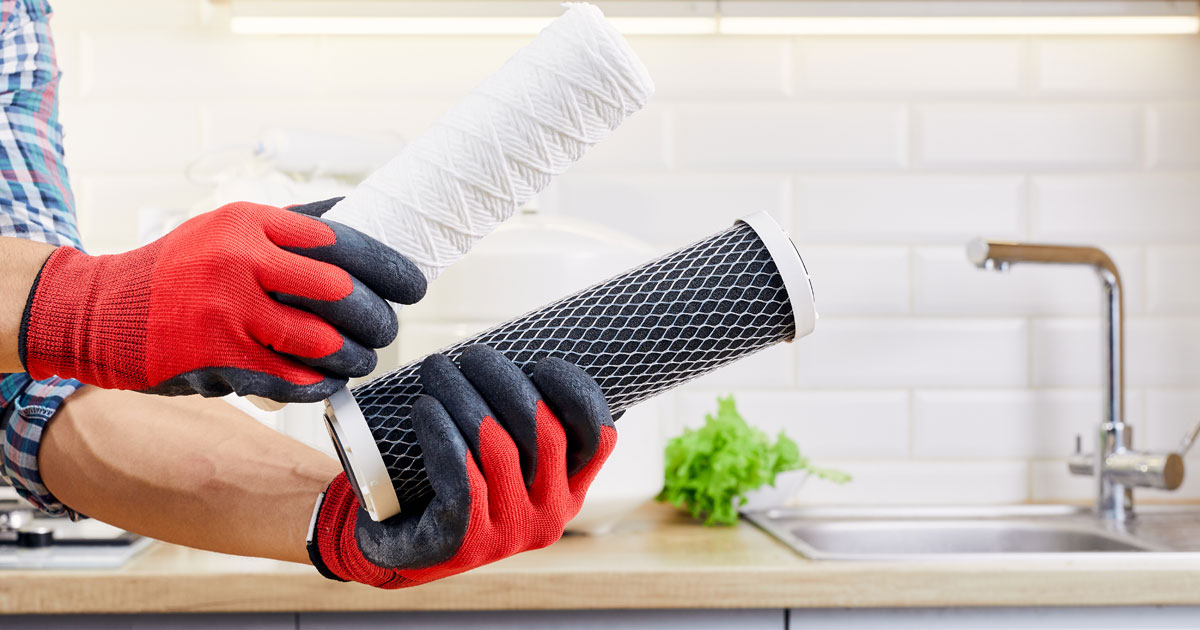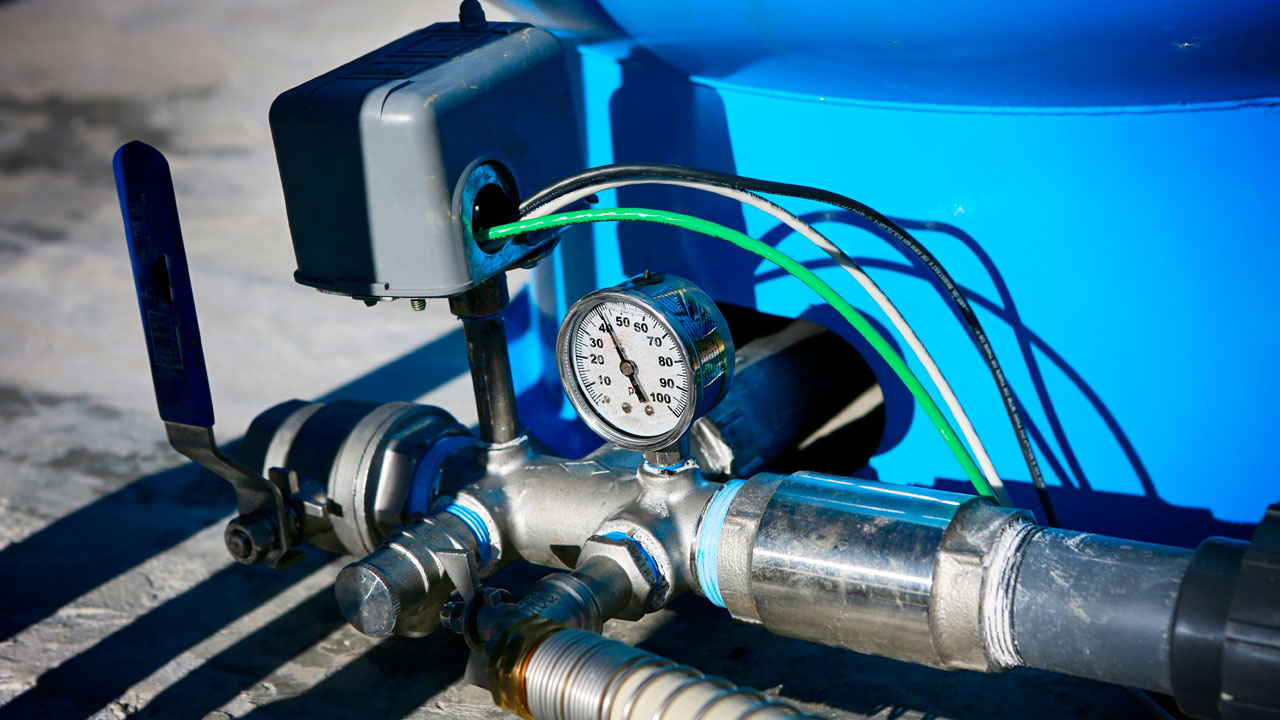Microns, Flow Rate, and Home Water Pressure — What You Need to Know
 Andrew
June 18, 2025
#flowrate
#gpm
#micronrating
#pressuredrop
#waterpressure
#waterquality
Andrew
June 18, 2025
#flowrate
#gpm
#micronrating
#pressuredrop
#waterpressure
#waterquality

A micron (also called a micrometer and represented by the symbol µm) measures incredibly small particles: one micron equals 1/25,000th of an inch (0.001 millimeters). To put this in perspective, a 5 micron water filter blocks particles around eight times smaller than what the human eye can see. A 1 micron filter catches contaminants fifty times smaller than a human hair's width.
Micron Water Filter ChartParticulate matter in filtration can be difficult to chart because almost every contaminant has a range in size. Selecting a micron rating, especially a nominal one, means filtering for a certain percentage of all particulate matter above the stated rating. Here's what to expect for five common ratings:
- 50 micron water filter: relatively large particles that are visible to the naked eye, such as dirt, silt, and debris
- 20 micron water filter: Removes sand, rust, and large sediment particles; ideal for pre-filtration in well water systems
- 5 micron water filter: Catches finer sediment, silt, and suspended particles; protects downstream filters and improves water clarity
- 1 micron water filter: Capable of removing cysts (like Giardia and Cryptosporidium), very fine sediment, and provides high-level particle filtration; often used as final polishing stage
- 0.5 micron water filter: better at reducing Cryptosporidium and Giardia and protozoa from water, but may excessively restrict water flow in some systems
Most consumer filters use nominal micron ratings, meaning they capture around 85% of particles at the stated size. An absolute rating captures 99.9% of particles at that size but costs significantly more and severely restricts flow. These are highly specialized filters used when purity of water is critical, such as in medical, pharmaceutical, or food processing industries.
What micron filter is best for well water? It depends on your specific contaminants, but starting with a 20 micron pre-filter followed by a 5 micron filter handles most situations without restricting flow.
The key insight: smaller micron ratings aren't automatically better. A 1 micron filter will clog quickly with sandy well water that needs a 20 micron pre-filter first. Proper sequencing matters more than using the finest filter available.
Filter Media Impact on PerformanceThe material and construction method dramatically affect how micron ratings perform in real-world conditions:
Sediment filters use various materials, each with different characteristics. Spun polypropylene offers good dirt-holding capacity and lower cost, while pleated polyester provides more surface area and longer life. Thermal-bonded polypropylene resists channeling, and grooved melt-blown designs improve flow characteristics.
Carbon filters also vary significantly. Powdered activated carbon (PAC) blocks provide excellent contaminant removal but higher pressure drop. Granular activated carbon (GAC) offers better flow rates, while coconut-shell catalytic carbon excels at removing chloramines. Each type affects both filtration effectiveness and flow rate differently.
In the category of pool and spa cartridge filters, filter media might be the most important factor. That's because these filters are pleated to provide for a large surface area, which is necessary to do the work of filtering thousands of gallons of water. Importantly, these filters rarely include a micron rating because of the focus on overall filtration efficiency. (Learn more about pool and spa cartridge filters.)

Here's a truth the filtration industry doesn't advertise: reputable filter manufacturers rarely list specific flow rates or gallons per minute on most standard water because too many variables affect real-world performance. Water temperature, pressure, and overall quality, including the actual list of impurities present, can all dramatically impact flow. When manufacturers do mention flow rate, it is typically based on controlled laboratory conditions to demonstrate capacity that may or may not be achievable in a home.
Here are the variables affecting flow rate:
- Water pressure: Most homes operate between 40–60 PSI, but variations significantly affect flow; homes with low pressure may benefit from booster pumps, while high pressure may require pressure reducing valves
- Contaminant load: Heavy sediment typically clogs filters faster, reducing flow over time
- Filter age: Filters have a usable lifespan and can deteriorate from contaminant load or general exposure; monitor for flow reduction and maintain replacement schedules based on your water quality
- Temperature: Home filtration systems typically treat cold water lines only, though seasonal fluctuations from hot weather can affect municipal supply pressure and warm pipes, impacting flow characteristics
Pressure drop refers to the reduction in water pressure as it passes through a filter. Every filter creates some pressure drop. The tighter the filtration (smaller microns), the greater the pressure drop. Multiple filters in sequence add their pressure drops together.
Signs of excessive pressure drop include weak flow from faucets, especially on upper floors, or appliances struggling to fill. If you notice significant flow reduction after installing filters, you may need larger filter housings, fewer filtration stages, or higher micron ratings for pre-filters.

City water typically needs taste and odor improvement rather than heavy sediment removal. A 5 micron sediment pre-filter followed by activated carbon handles most situations without significantly impacting flow. The pre-filter protects the carbon from any residual sediment, extending its life, but a standalone carbon filter may be sufficient for some. But neither of these basic filters will effectively manage contaminants like heavy metals, bacteria, viruses, or fluoride. These impurities may require added filtration.
Well Water SystemsWell water requires more planning. Start with water testing to identify specific contaminants, then sequence filters appropriately. A typical sequence does in fact take from the playbook described above, followed by some additional water treatment depending on the well's water quality:
- 20 micron pre-filter for sand and large sediment
- 5 micron secondary filter for fine particles
- 5 or 1 micron activated carbon filter for taste, odor, and chemical removal
- Additional treatment (UV sterilization, water softening) as needed
Proper system design balances filtration effectiveness with adequate flow. Larger filter housings ("Big Blue" 4.5" x 20" vs. slim 2.5" x 10") provide more surface area and better flow characteristics. Installing filters in parallel can help maintain pressure while providing comprehensive treatment.
Consider the cumulative effect of multiple treatment stages. A sediment filter, carbon filter, water softener, and UV system each add pressure drop. If you're planning a comprehensive system, consult with water treatment professionals about proper sizing and sequencing to maintain adequate water pressure throughout your home.
Making Smart Filter ChoicesWhat is the best water filter system for home use? The answer depends on your specific water quality, pressure, and household needs. Avoid systems that promise unrealistic flow rates or claim to solve every water problem with a single filter.
Quality filters will state micron ratings in nominal or absolute and will include realistic maintenance schedules. Certifications from organizations like NSF and IAPMO can be helpful, but standards vary within the industry. For example, carbon filters are often certified to NSF Standard 42 (which has to do with the reduction of contaminants that affect the water's aesthetics, such as taste and odor) while sediment filters often don't carry a certification. In fact, most sediment filters don't carry a performance certification at all, though some manufacturers may certify individual components or materials for safety.
The reason is because sediment filters work through simple mechanical screening—like a fine mesh that traps dirt and particles—making their performance predictable and easily verified without expensive third-party testing. This straightforward functionality allows trusted filtration companies to pass those savings directly to budget-conscious customers. Additionally, reputable manufacturers often offer 30-day money back guarantees to help their customers make the transition from a familiar brand.
There are a few red flags to avoid when purchasing water filters:
- Specific GPM claims without knowing your water conditions
- Suspiciously long lifespans or even "lifetime" filters
- Single filters claiming to remove everything from sediment to chemicals
The physics and mechanics of filtration are straightforward: smaller particles require finer filters, finer filters reduce flow, and multiple stages compound these effects. Understanding these relationships helps you choose systems that actually work in your specific situation rather than chasing marketing promises that ignore the fundamental realities of water treatment.
Success comes from matching filter specifications to your actual water quality and pressure conditions, then maintaining the system properly. When manufacturers make claims about flow rates or filtration that seem too good to be true, they usually are—because they're ignoring the basic principles that govern how water moves through filtration media.






